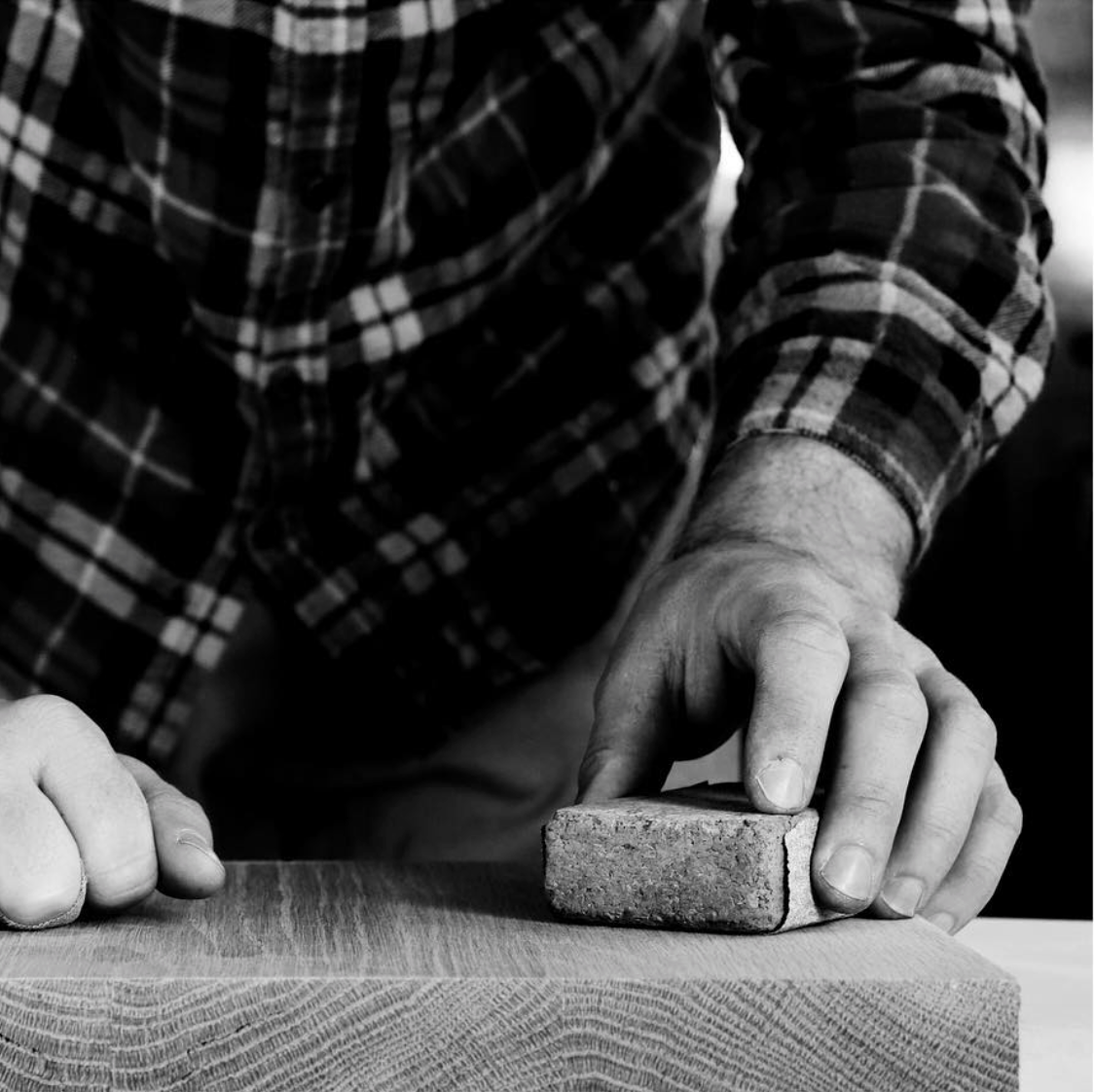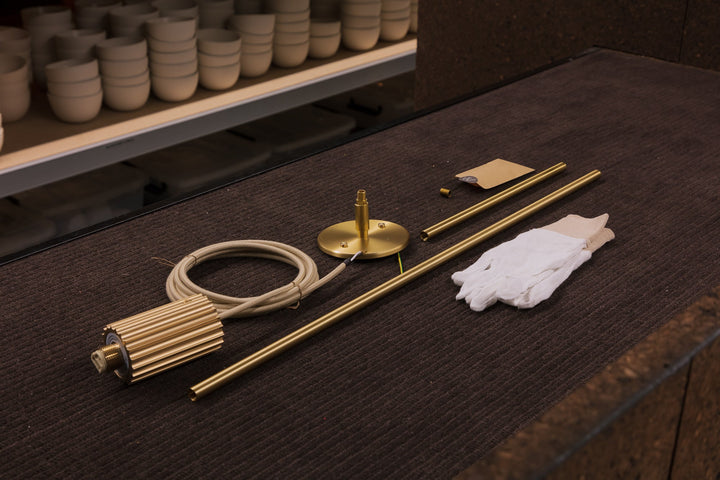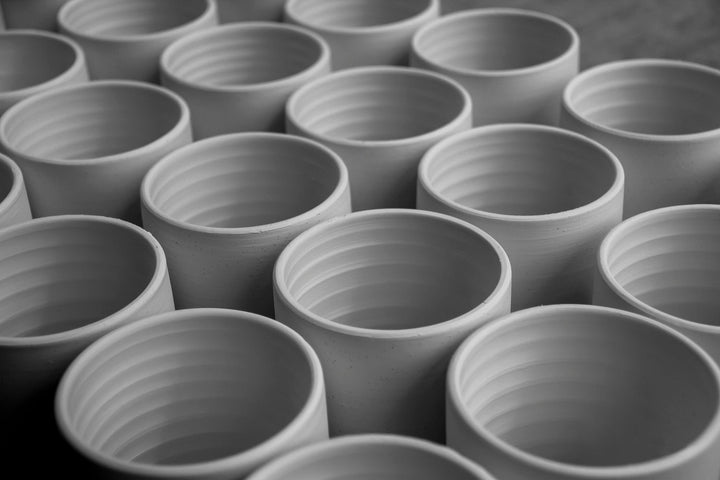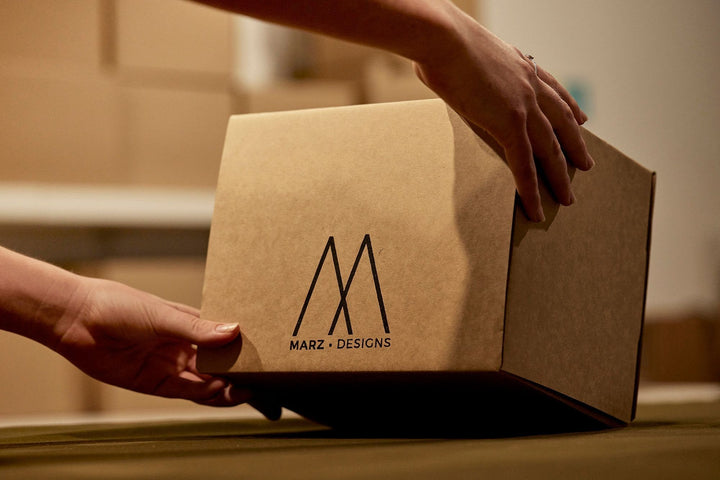Collaborating with Melbourne Table Co.
Melbourne Table Co., led by Joe Chester, is a unique Melbourne-based furniture and homewares company who designs and produces a range of objects, seating, sideboards, tables and bespoke pieces. Joe produces our Oversized Bright Beads range, one part of our Terra 00, and our latest release, the Selene range.
Marz Designs is lucky to have Joe’s eyes and deft attention to detail on all of our timber products. We recently spoke with Joe about his humble journey from burger shop to bespoke furniture company and gathered his thoughts on how best to care for your timber products.
Continue reading below.


Tell us about timber. What do you like about it visually and from a manufacturing perspective? Why do you choose to work with timber?
I love when a piece of rough sawn timber first goes over the planer or comes out of the thicknesser. The transformation is so satisfying, often unexpected and stark. I love it. I’m not sure why my main material is timber. I like to use other materials of course, but I suppose the main thing is the sustainability factor. It’s also handy that you can transform timber with so many techniques. Even an unwanted dent can be removed with the right process.
How important is upkeep on timber pieces and do you have any tips on how to get the best out of timber?
I usually say to clients: nothing scratchy (including cleaning objects). Direct sunlight will make things yellow and/or fade. Consider heat: Underfloor heating, direct sunlight and other heat sources will bake timber in ways it won’t like (use the recommended light bulbs) and clean up liquids as soon as possible. It sounds like a lot but we do it all day with clothing.

What other timber care recommendations can you provide?
- Spills should be cleaned up immediately
- Occasionally, lightly buff the surface in the direction of the wood grain with a soft cloth
- Keep your furniture free of dust and grime by regular light cleaning
- Avoid exposing to harsh/direct sunlight, heaters, air conditioning, or fireplaces
- Avoid leaving heavy objects for long periods of time
- Protect from cold hot or damp objects with coasters
- Do not use harsh or abrasive chemicals or cleaning tools
Why are you so focused on Australian Manufacturing?
Keeping people employed is really important to every economy. Unemployment can lead to mental health issues and crime which can further burden the economy. It’s almost impossible to offer one-off or short-run furniture production from overseas. The lead times are crazy and when something goes wrong you’re stuck with something that might not be as you wanted it. What are you going to do then? There is no reason we can’t build things for ourselves in this country.
“For timber upkeep, I usually say to clients: nothing scratchy (including cleaning objects). Direct sunlight will make things yellow and/or fade. Consider heat: Underfloor heating, direct sunlight and other heat sources will bake timber in ways it won’t like.”
What types of Australian timbers do you work with?
Tasmanian Oak, Vic Ash, Black Butt, Jarrah, Stringy Bark, Messmate, Spotted Gum, Blackwood and Reclaimed Timber to name just a few.
What do you think is the most important consideration to make when choosing timber furniture and homewares?
Beyond asking whether the piece will fit my taste I guess I use the following questions for myself and hope others will do the same.
- Stylistically, will this piece look good in 20 years?
- Is the design original and is the designer or their family getting paid?
- Are the workmanship and materials of high quality and will they last if taken care of? (Often the most vulnerable forests become the crappiest/short-lived products).
And where did you access all this knowledge of timber?
Dad always had a workshop and built things (boats, furniture, the house I’m sitting in, etc.) so I’ve always had access to tools and a natural inclination to make things. I followed that through high school in Tasmania, selling objects through the Design Centre in Launceston and a few other shops, and then studying Furniture Design at RMIT in Melbourne seemed like the natural next step. I was never a great student or maybe it was the stress of suddenly paying big city rent but afterwards, I sidestepped into hospitality for around 10 years before looking for another career. I studied building and construction before chipping a couple of vertebrae on a bike ride one beautiful evening in my mid to late twenties. I studied signwriting for a time as well as a handful of certificates in random stuff. Then one day, while still managing a burger restaurant, I made a wooden necklace for my then girlfriend. I made a few more for some shops and expanded the jewellery range. The Design Files did a feature and it all snowballed from there. Before I knew it I had a workshop and staff in Preston.
A few years into that I found I didn’t like the trajectory, I felt like I was going to end up spending my whole life in a factory (I love factories but they need to excite me). Usually by the time a product had become profitable someone was getting knockoffs made overseas and I couldn’t compete… (with myself). I moved into larger pieces of furniture, usually small runs of products. I’ve learnt to be selective with my clients and only take on work where the outcome leaves me satisfied at the end of the day.


Selene Uplight
The Selene Uplight, the newest timber product in the Mars Designs range, utilises timber offcuts and elements from other products, making it a uniquely efficient range of contemporary lighting. The video above demonstrates our waxing process, protecting the component for years to come.
The Selene Surface Sconce is inversely repurposed while the Selene Uplight – crafted from a quarter timber dome that sits atop a cylinder – is derived from the FSC certified timber offcuts from our Terra 00 range.
For more information about colour, materials, size and lead time, please view the product here.







